By: Nir Barnea, Pacific Northwest Regional Coordinator for the NOAA Marine Debris Program
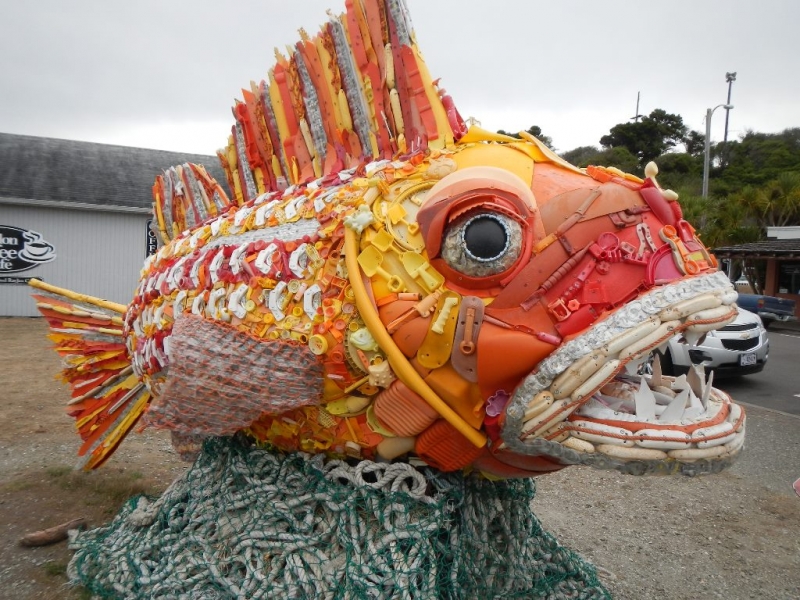
The first thing you see as you approach the Washed Ashore gallery in Bandon, Oregon, is a creation of plastic pieces and nets: Henry the Fish. Now retired from an illustrious career in many shows, Henry serves as a silent greeter. When you enter the gallery and look up, an ocean gyre is above you. It is made of a bluish fishing net, and plastic pieces of different shapes and colors “float” within it. A whale bone structure made of white plastic containers is in the center. To the side is a jellyfish, with its stinging tentacles made of plastic bottles. Under it is a sea star, with part of its anatomy made of plastic water bottles collected from the beach. There is an oil spill sculpture there, and masks, and other works of art – all made of marine debris. Although they are colorful, nothing is painted: there is plenty of marine debris in all shapes and colors available to give the sculptures any color in the rainbow, highlighting the message that marine debris is a prevalent problem we must address.
For years, Washed Ashore has used marine debris to create art. Known for large art, it takes a community to create each piece. Marine debris is collected by volunteers and then cleaned, sorted, and turned into “art supplies.” Angela Haseltine Pozzi, Washed Ashore lead artist, designs each sculpture. Once designed, volunteers from school children to retirees help put pieces of debris together while Washed Ashore artists, led by Angela, use these pieces to put the finishing touches on the sculptures.
With support from the NOAA Marine Debris Program, Washed Ashore will take its art and message to schools. In collaboration with local teachers, Washed Ashore will work with Bandon-area children ranging from elementary to high school. Using a curriculum developed by the “Washed Ashore” program, they'll teach about marine debris and its many negative impacts, how to prevent marine debris from happening in the first place, and how to turn collected debris into art.
For more information, check out Washed Ashore’s website or take a look at the project page on the NOAA Marine Debris Program website.

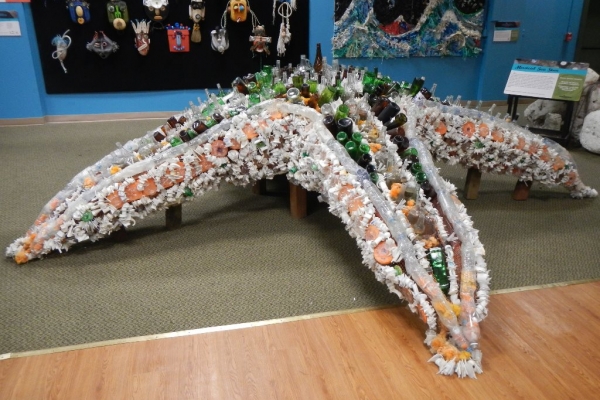
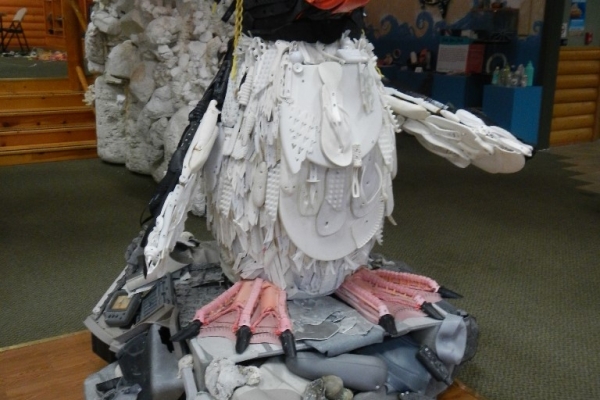

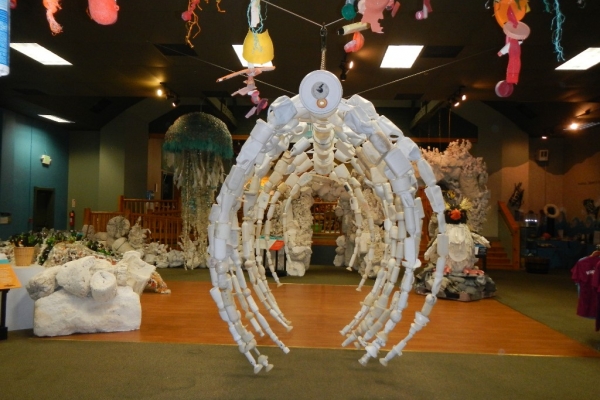
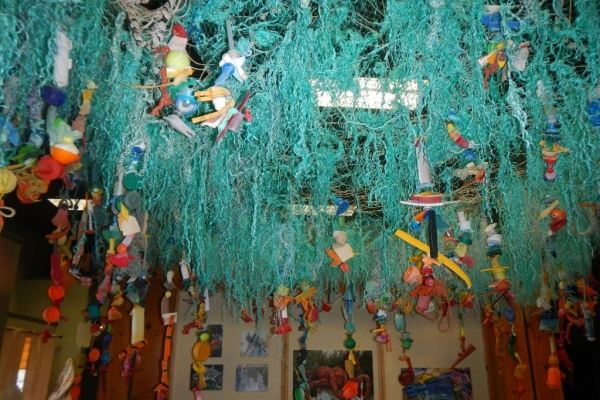

hi